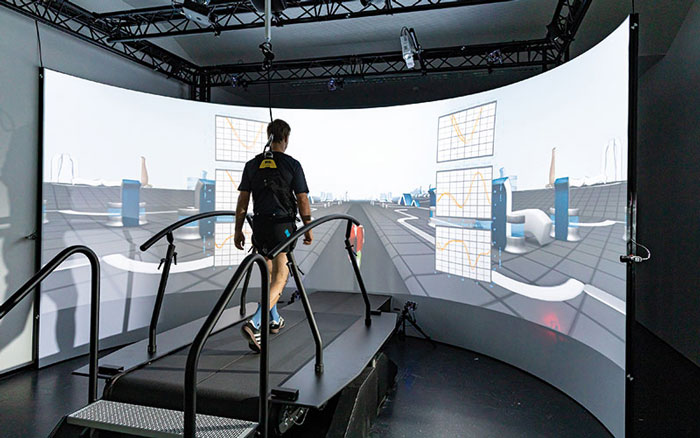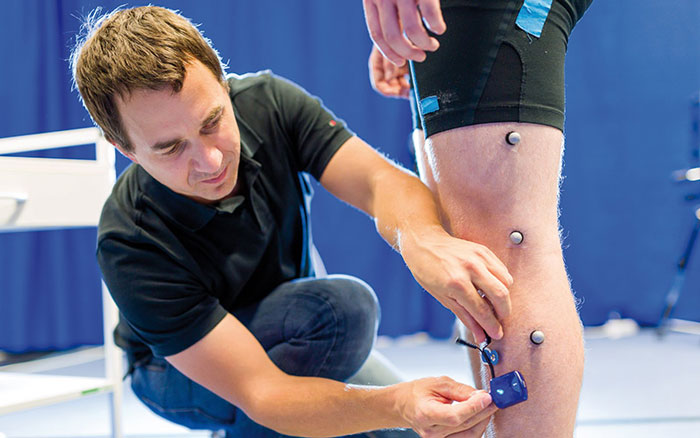Frequently searched
Using your smartphone while walking: How does this affect our gait and musculoskeletal system? Researchers are Investigating this question in the new Gait Realtime Analysis Interactive Lab (GRAIL). With the unique movement laboratory, FH Campus Wien is the first university in Austria to be able to research such unfavorable stresses on the joints.
The GRAIL enables visual, auditory and sensory feedback on movement sequences in real time. To do this, test subjects walk on a special treadmill in front of a 180-degree screen on which a virtual environment is projected. Small markers on different parts of the person’s body visualize their movements as a real-time 3D model and assess joint movements and the resulting forces. Measuring plates in the treadmill record how the feet are placed and loaded. Teachers and researchers can work with students to analyze and research complex processes such as walking, lifting or grasping movements in more detail.
For the "textwalker" study by Sebastian Durstberger and his team, test subjects marched through the virtual streets once with and once without a smartphone. Do we actually walk differently? The initial study results show that the use of smartphones leads to different forces in the knee joints and in the entire gait pattern. In the long term, this could lead to increased wear and tear on the cartilage or meniscus. "We have the unique opportunity in Austria to investigate such physiotherapy issues with the help of real-time feedback in a virtual environment," says Klaus Widhalm, teacher and researcher in physiotherapy, "that opens up completely new research opportunities for us."
With the GRAIL, FH Campus Wien integrates movement analysis in a contemporary and future-oriented manner into teaching and research. The high-tech laboratory is used for example in close cooperation with the competence center INDICATION (INovation hub for DIagnostiC And Therapeutic applicatIONs). The multidisciplinary research group, which combines competencies from the fields of medical-technical professions such as biomedical science, dietetics, occupational therapy and physiotherapy, is driving therapeutic and diagnostic innovations.

